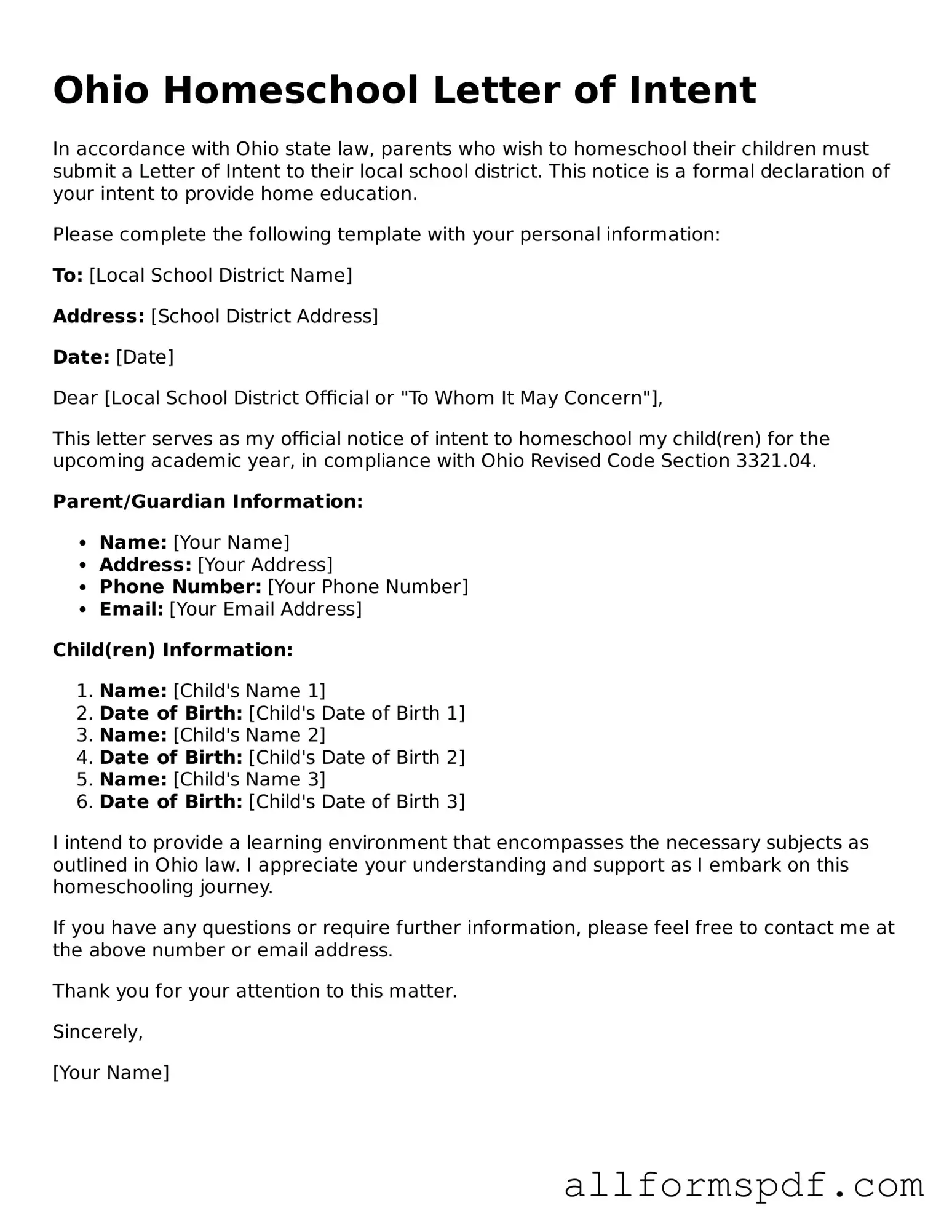Filling out the Ohio Homeschool Letter of Intent form is an important step for parents who wish to homeschool their children. However, many make common mistakes that can lead to complications. One frequent error is failing to provide the required information. Each section of the form must be completed accurately, including the names and ages of all children being homeschooled. Omitting even a single detail can result in delays or issues with compliance.
Another mistake is neglecting to sign and date the form. This may seem trivial, but without a signature, the form is considered incomplete. Parents should ensure that they review the entire document before submission, as this small oversight can lead to significant problems in the future.
Some individuals mistakenly believe they can submit the form at any time. In Ohio, the Letter of Intent must be submitted at least 14 days before beginning homeschooling. This timeline is crucial to ensure that everything is in order before the educational year starts. Missing this deadline can hinder the homeschooling process and create unnecessary stress.
Additionally, parents often overlook the requirement to notify their local school district. After submitting the Letter of Intent, it is essential to inform the district of the decision to homeschool. Failure to do so can lead to misunderstandings and potential legal complications.
Another common error involves misinterpreting the educational plan requirements. The form asks for a brief outline of the intended curriculum. Some parents provide vague descriptions or fail to include enough detail. A well-defined educational plan is essential, as it demonstrates a commitment to providing a structured learning environment.
Some individuals also forget to keep a copy of the submitted form. Retaining a copy is vital for record-keeping and can serve as proof of compliance should any questions arise in the future. It is advisable to maintain organized records of all homeschooling documentation.
Moreover, parents sometimes underestimate the importance of updating the form if there are changes. If a child’s educational needs evolve or if there are changes in the family situation, it is crucial to submit an updated Letter of Intent. Ignoring this can lead to complications with the homeschooling status.
Lastly, many parents fail to familiarize themselves with Ohio’s homeschooling laws. Understanding the legal framework surrounding homeschooling is essential for a smooth experience. Ignorance of the rules can lead to unintentional violations, which may result in penalties or the need to cease homeschooling.
By avoiding these common mistakes, parents can ensure a more seamless transition into homeschooling. Careful attention to detail and adherence to Ohio's regulations will help create a positive educational experience for both parents and children.
